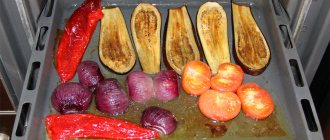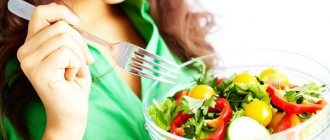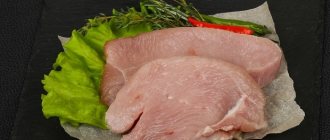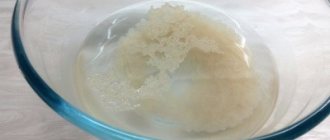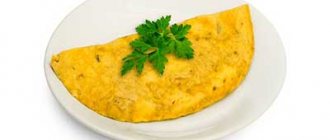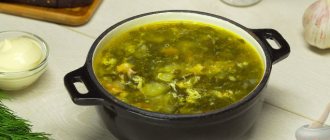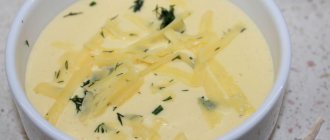Calorie content of fresh vegetables
The calorie content of vegetables is important to know for overweight people who want to lose weight. The caloric intake of the diet is calculated taking into account all the components of the diet. Calories in vegetables are most often calculated per 100 g of food weight. Now you can find different versions of online calculators that allow you to calculate the required daily calorie intake depending on gender, initial and desired weight, type of activity and age, as well as find out how many calories are in the vegetables of a particular dish.
It is known that plant foods are lower in calories compared to animal products. This makes vegetables a valuable dietary product. Individual vegetable crops can be combined in a variety of ways, which allows vegetable salads for weight loss to become a dish that diversifies your daily diet.
Some examples of calorie content of fresh vegetables (kcal per 100 g of product):
- Eggplant – 24;
- Green peas – 72;
- White cabbage – 28;
- Potatoes – 83;
- Onions – 43;
- Carrots – 33;
- Cucumbers – 10;
- Sweet pepper – 27;
- Parsley – 45;
- Radish – 20;
- Tomatoes – 15;
- Salad – 14;
- Green beans – 32;
- Garlic – 106.
The calorie content of vegetables can sometimes be quite high, these primarily include legumes (peas, beans, beans) and starch-rich vegetables (for example, potatoes). They can be included in the diet only periodically, replacing other high-calorie dishes with them. Watery vegetables are the lowest in calories (for example, cucumbers, tomatoes) and are recommended to be consumed daily. Vegetable salads for weight loss, among other things, are valuable for the structured water they contain.
It is important to remember that the calorie content of a vegetable salad is affected by what it is seasoned with. Mayonnaise, full-fat sour cream or sauce significantly increase the calorie content of vegetables, so people on a diet are best seasoned with vegetable oil (sunflower, olive, etc.) or, even better, lemon juice.
Pastries and sweets
These products have virtually no nutritional value, but they are very energy-intensive.
When losing weight, it is recommended to reduce the amount of flour products and sweets to a minimum or avoid them altogether. Such products do not contain nutrients, have a significant glycemic index, and supply the body with fast carbohydrates and “empty” calories, which are likely to be stored as fat. Calorie content of sweets:
| Bakery | Calorie content per 100 g of product |
| Sugar | 398 |
| White bread | 265 |
| Rye bread | 210 |
| Pasta | 350 |
| Butter pastries | 300 |
| Caramel | 370 |
| Chocolate candies | 569 |
| Milk chocolate | 550 |
| Bitter chocolate | 539 |
| Condensed milk | 320 |
| Ice cream | 220 |
| Honey | 314 |
| Marmalade | 293 |
| Marshmallow | 304 |
| Waffles | 450 |
Calorie content of stewed vegetables
In addition to fresh vegetables, the diet always contains thermally processed ones. For those people who follow a low-calorie diet, it is recommended to boil or stew vegetables. Heat treatment makes it easier to digest many of them, although this destroys a number of beneficial vitamins and other biological substances. But steamed vegetables create a feeling of fullness while keeping calories low. Thus, the calorie content of vegetable vinaigrette salad is only 92 kcal per 100 g. You can improve the taste of stewed vegetables with herbs and vegetables - basil, garlic, onions, thyme, etc.
Vegetable dishes turn out tastier if they are combined with each other, for example, in the form of vegetable stew. It can be consumed both as an independent dish and as a side dish. The calorie content of stewed vegetables will be summed up from the calorie content of the individual products in its composition - potatoes, green peas, tomatoes, cauliflower and sweet red pepper. If desired, the list of ingredients can be supplemented or changed. It is also useful to eat cabbage more often - even in stewed form, it is a rich source of vegetable protein, vitamin C and dietary fiber (fiber), which improves intestinal function.
The calorie content of vegetables makes it possible to include them in the diet of obese patients every day without worrying about weight gain.
Vegetables play a huge role in dietary nutrition. But not every one of them may be suitable for the diet of a person who wants to lose weight, because there are very high-calorie vegetables. To avoid mistakes, a special calorie table has been developed, where you can see the nutritional value, composition of proteins, fats, carbohydrates of any vegetable.
Meat products
Meat products contain practically no carbohydrate component; they are rich in proteins and fats.
Animal fat, if consumed in excess, can cause increased cholesterol levels and the development of atherosclerosis. However, you should not give up meat products - meat and eggs contain a full range of essential amino acids that the body requires to form muscle mass.
For a healthy diet, choose lean meats and egg whites. Calorie table for meat products:
| Meat products | Calorie content per 100 g of raw product | Calorie content per 100 g of prepared product |
| Beef | 187 | Stewed: 232 Fried: 384 |
| Pork | 265 | Stewed: 350 Fried: 489 |
| Mutton | 294 | Stewed: 268 Fried: 320 |
| Chicken breasts | 113 | Boiled: 137 Fried: 157 |
| Chicken legs | 158 | Boiled: 170 Fried: 210 |
| Duck | 308 | Baked: 336 |
| Goose | 300 | Baked: 345 |
| Eggs | 155 | Fried: 241 Boiled: 160 |
| Egg white | 52 | Boiled: 17 Fried: 100 |
| Egg yolk | 322 | Boiled: 220 |
| Ham | 365 | |
| Boiled sausage | 250 | |
| Smoked sausage | 380 | |
| Sausages | 235 |
Calorie content of fresh vegetables
Products of plant origin, when broken down in the human body, release less energy compared to animal foods, and also contain a sufficient amount of fiber, which creates a feeling of satiety and normalizes intestinal function. Therefore, vegetables are a valuable dietary component of nutrition.
Different types of vegetables combine well with each other, which allows you to create a large number of delicious dishes.
Let's look at the calorie content of some fresh vegetables, kcal/100 g:
- Cucumbers – 14
- Zucchini, green salad – 18
- Tomatoes – 21
- Eggplants – 24
- Cauliflower, potatoes, leeks, carrots - 38
- Onions, beets – 53
- Green peas – 92
- Garlic – 148
Cucumbers have the least calories, only 14 kilocalories, and the energy weight in lettuce and tomatoes is not much greater. In addition, these vegetables are very healthy and daily consumption is recommended.
Garlic contains the most calories, but it is simply impossible to eat enough of it to gain weight. The most “dangerous” in terms of gaining extra pounds are green peas, so don’t get carried away with eating them.
Calories in fresh vegetables may not always be a useful indicator, since some of these foods are not eaten raw, such as eggplant or potatoes.
It is very important to remember that the calorie content of fresh vegetable salads largely depends on the dressing. Therefore, if you season even the lowest-calorie vegetables with mayonnaise or fatty sauce, it will no longer be a dietary dish.
Classification
The variety of vegetables makes it difficult to count calories. Based on the classification, you can calculate the approximate calorie content of a dish if there is no accurate information about the calorie content of its ingredients.
Tubers
- potato;
- sweet potato;
- Jerusalem artichoke.
Dishes made from these products are considered quite high in calories, so they are best suited for lunch. The approximate number of calories in them is from 60 to 77 kcal, with regular potatoes being the highest in calories.
Roots
Root vegetables include:
- beet;
- carrot;
- turnip;
- radish;
- swede;
- roots of parsnip, parsley, celery.
Onion
The calorie content of onions of different varieties ranges from 36 kcal for leeks to 72 kcal for charlotte onions. You can get more calories from garlic. It contains 149 kcal, but eating 100 grams of this product is a difficult task.
Fruit
- tomatoes;
- cucumbers;
- eggplant;
- squash;
- peppers;
- zucchini;
- pumpkin;
- artichokes and other vegetables.
The calorie content of these products ranges from 16 to 35 kcal.
Properties of boiled vegetables
The food system contains vegetables that have undergone heat treatment. Those on a diet are recommended to eat steamed, boiled, and stewed vegetables. Although cooked, they lose a number of vitamins, their calorie content increases, but such products are easier to digest, their taste improves, and some vegetables cannot be eaten raw at all.
To find out how many calories are in boiled vegetables, you can use calorie tables or special calculators. But we can say that boiled vegetables, in comparison with fried ones, have much lower energy value, so they are considered dietary.
For example, a Vinaigrette salad without dressing has a calorie content of up to 95 kilocalories, which sums up the calorie content of all the vegetables used for cooking. So, calorie content does not increase critically.
To improve the taste of dishes made from boiled vegetables, you can add various aromatic herbs, they will not increase the calorie content, garlic, hot pepper. You can prepare a stew from several types of vegetables; this dish allows you to change the recipe, making combinations of products according to your taste and desire.
Features of cooking
Since the temperature during steaming does not exceed 100°, the products retain their natural color and taste, and their vitamins are almost not destroyed. However, despite the apparent simplicity of the technology, the “steam kitchen” has its own characteristics that should be taken into account.
- Only environmentally friendly products are allowed to be used - during steam treatment, pesticides, nitrates and additives for accelerating growth do not disappear anywhere.
- Vegetables should not be overripe so that they do not lose their shape when cooked.
- It is better to cut vegetables or meat into pieces of the same size, so they will be ready at the same time.
- It is not recommended to place too many layers of food, as this will lengthen the cooking time.
- If you are preparing several dishes at the same time, it is better to place meat on the lower tier of the steamer (it will get hotter steam), and place vegetables on the upper tier.
- You should follow the cooking mode and time specified in the recipe so that instead of a healthy and tasty dish you do not end up with biologically inert, unappetizing porridge. Thus, the cooking time for root vegetables is approximately 30 minutes, green vegetables - up to 5. Beef and pork are cooked for 1.5 hours, poultry and rabbit meat - approximately 45 minutes, fish - 15-20.
- It is not recommended to cook pasta in a steamer - it will boil and stick together.
Frozen vegetables - properties
If you want to eat vegetables that retain all the beneficial substances, and the season for fresh ones has long passed, then frozen vegetables can be an excellent alternative.
Freezing is practically the only method of preservation that can preserve almost all the nutritional characteristics of a fresh product. At the same time, vitamins and other nutrients are not lost. The calorie content of vegetables does not change, and if there are changes, they are so insignificant that they can be neglected.
No one doubts that vegetables are the healthiest and most dietary human foods. It is impossible to imagine a single diet where they are not present. Eating vegetables supplies the body with essential nutrients and ensures its normal functioning.
Advantages and disadvantages
The steam diet is one of the safest for health. It is used in the treatment of diseases of the liver, kidneys, gastrointestinal tract, diabetes, cardiovascular pathologies, and is prescribed for colds and skin diseases, during the rehabilitation period after operations. This type of gentle diet has a huge number of advantages:
- Since most nutrients are retained in food, following a dietary regimen helps not only to lose weight, but also to increase immunity, rejuvenate the body, and improve the condition of the skin and hair.
- The diet menu is varied, products are available.
- Using a steamer you can cook several dishes at the same time.
- The calorie content of the daily menu is low, at the same time the body does not experience hunger, since restrictions exist only on the method of preparing food, but not on its quantity.
- Due to the balanced diet, additional vitamin intake is not required.
- Slow weight loss ensures the stability of the result - a sharp gain in body weight after stopping the diet regimen is excluded.
The disadvantages of the diet include some difficulty in organizing meals. Food cooked in a double boiler will have to be brought to work or college in containers, and not everyone can quickly wean themselves off fried foods. And the usual disadvantage for “long-term” diets: you won’t be able to lose weight very quickly using this technique.
General points
Vegetables and fruits should be on the daily menu and in considerable quantities. It is an important source of many vitamins, microelements and fiber, which plays an important role in cleansing the body of excess water and toxins. Also, thanks to these products, the smooth functioning of the intestines is normalized and maintained, and the functioning of blood vessels and the heart muscle improves. However, remember that plant fruits, for all their benefits, can be very high in calories! This point is especially important for those who want to lose weight quickly and without harm. The absolute low-calorie champions are all kinds of green fruits and vegetables.
Important!
Fruits contain much more carbohydrates than vegetables, so it is recommended to consume them exclusively at the beginning of the day, when you expend the maximum amount of energy.
The calorie calculations given in the tables are for fresh fruits. The calorie content of fresh vegetables is lower than that of processed vegetables. Take this into account when planning your meals for the day and try to give preference to fresh crops - beneficial microelements and vitamins are not destroyed by heat treatment.
What do vegetables contain?
There is water in all fruits, its amount can vary (7-85%), it depends on the species, varieties, and places of growth. Cucumbers, tomatoes, cabbage, lettuce and others contain a large amount of water.
- Carbohydrates are components of vegetables. Carbohydrates occupy up to 90% of dry matter. Fiber takes up 0.3-4%.
- The source of starch is potatoes, peas, and corn.
- Vitamin C is found in almost all fruits. Parsley, bell peppers, onions, cabbage, etc. are rich in it.
- The most vitamin A is found in carrots, tomatoes, leafy and green vegetables.
- All types of cabbage are a source of vitamin B2
- The amount of minerals is 0.25-2%, almost all fruits are rich in calcium, iron, magnesium, sulfur, phosphorus, potassium, zinc, iodine, cobalt, arsenic, copper.
- A large number of active phytoncides are contained in onions, garlic, and horseradish. They protect fruits from various diseases.
- Garden plants contain small amounts of fat, from 0.1% to 0.5%.
We suggest that you consider in detail the table with the chemical composition.
Energy value of vegetables
The top non-calorie vegetables include: broccoli, carrots, radishes, tomatoes, zucchini. But the undisputed leaders remain Chinese cabbage and cucumbers. Beijing cabbage, in addition to its low-calorie content (13 kcal per 100 g of fruit), is also a real treasure trove of vitamins and the essential amino acid lysine. It helps cleanse the blood and reduces the risk of progressive atherosclerosis. Cucumbers, in turn, contain 14 kcal per 100 g of product and are rich in potassium, iodine, vitamins and folic acid. This entire complex has an extremely positive effect on the enzymatic function of the thyroid gland, the functioning of the gastrointestinal tract and the nervous system.
Canned and pickled vegetables
All canned foods are extremely high in calories. The maximum nutritional value of olives is 175 kcal/100 g. Next is caviar from zucchini or eggplant, 121 and 149 kcal, olives - 117 kcal and tomato paste - 102.
Green peas contain much fewer kilocalories - 41 kcal, spinach and green beans - 18 kcal.
Among pickled vegetables, beets deserve the “calorie” championship - 35 kcal, followed by carrots - 24 and white cabbage - 23. Calorie pickled fruits are crowned with sweet red peppers - 23 kcal, and in last place are tomatoes and cucumbers - from 13 to 18 calories.
Important!
Pickled and pickled vegetables are healthier than canned ones, but they are also higher in calories.
| Product | Kilocalories (kcal) |
| Radish | 18 |
| Tomatoes | 22 |
| Zucchini | 26 |
| Broccoli | 32 |
| Carrot | 34 |
| Swede | 38 |
| Eggplant | 23 |
| Green pea | 70 |
| White cabbage | 29 |
| Red cabbage | 32 |
| Cauliflower | 29 |
| Potato | 84 |
| Green onions | 22 |
| Bulb onions | 44 |
| Ground cucumbers | 15 |
| Greenhouse cucumbers | 10 |
| Green pepper | 21 |
| Red pepper | 28 |
| Radish | 35 |
| Turnip | 27 |
| Salad | 13 |
| Green bean | 32 |
| Horseradish | 72 |
| Cheremsha | 34 |
| Garlic | 107 |
| Spinach | 21 |
| Sorrel | 29 |
| Jerusalem artichoke | 61 |
| Artichoke | 29 |
| Gherkin | 30 |
| Pumpkin | 22,5 |
| Squash | 20 |
| Chinese cabbage | 13 |
| Beans | 58 |
| White beans | 102 |
| Red beans | 92 |
| Lentils (sprouts) | 118 |
| Corn on the cob | 115 |
| Soybeans (sprouts) | 145 |
Dish recipes
Cream soup with pumpkin
Peel and cut into small pieces 1-2 potatoes and 0.5 kg of ripe pumpkin (its flesh should be yellow-orange in color and its peel should be hard). Pour in chicken or meat broth until it covers the mixture. Cook over low heat until the potatoes are done. Grind in a blender until smooth, add salt and spices. Serve with sour cream.
Rice soup with cod fillet in a slow cooker
Peel the potatoes, cut into cubes, chop the onions, grate the carrots, rinse the rice thoroughly. Place all ingredients in a multicooker bowl and cook in “soup” mode for 15–20 minutes. Add cod fillets cut into small pieces, herbs, salt and spices. Cook for another 10 minutes. When serving, sprinkle with chopped green onions.
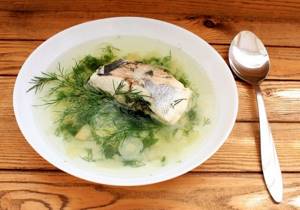
Vegetable stew in a double boiler
Ingredients: potatoes, carrots, white cabbage, onions, tomatoes. Grate the carrots, chop everything else coarsely. Mix vegetables, add salt, add Italian herbs seasoning and place in a bowl for rice. Cook for 40-50 minutes. This stew can be used as an independent dish or as a side dish for meat.

Peppers stuffed with meat and rice, steamed
Remove the seeds from the bell pepper, cut off the stem and place in a steamer for 5 minutes. Mix equal amounts of lean minced meat with unpolished (brown) rice, boiled until half cooked. Add finely chopped onions, grated carrots, salt, ground pepper, and a little vegetable oil. Fill the cups of peppers with the mixture, place them in a steamer bowl and cook for 30–40 minutes. Serve with sour cream or tomato sauce.
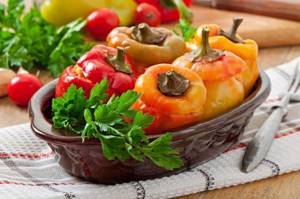
Stewed beef with sweet and sour sauce in a slow cooker
Cut 0.5 kg of beef tenderloin into small elongated pieces, add salt and pepper, and place in a multicooker bowl greased with vegetable oil. Place finely chopped carrots, onions, and parsley root on top. Pour in the broth so that it completely covers the mixture, cook in the “stew” mode for about an hour. Mix 2 tbsp. l. tomato paste, 1 tbsp. l. flour, 1 tbsp. l. sugar, 1 tsp. lemon juice or fruit vinegar, tomato paste, a few peas of allspice, bay leaf. Dilute the mixture to a liquid state with broth from the multicooker and pour the resulting sauce into the bowl. Simmer for another 10 minutes.

Steamed chicken soufflé “Mosaic”
Grind 300 g chicken fillet in a blender. Cut half a red bell pepper and a small slice of pumpkin into small pumpkin cubes, keep in boiling water for 5 minutes or blanch for steam. Beat 1-2 eggs with a spoonful of cream. Strain 50 g of canned green peas from the filling. Mix all ingredients, add salt. Place in the multicooker bowl and cook for 40 minutes in the “baking” mode. Cool the finished soufflé and cut into slices.
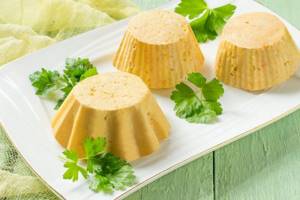
Millet porridge with pumpkin
Place the peeled and diced pumpkin in a multicooker bowl, add a small amount of water, and cook until softened (about 10 minutes). Add thoroughly washed millet, pour in milk and cook until the porridge becomes thick, and only then add sugar to the porridge. If the porridge is cooked on the stove, you will have to stir it constantly to avoid burning.
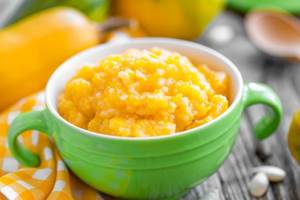
Curd soufflé
Grind the cottage cheese, add a beaten egg, vanilla sugar and peeled apples grated on a coarse grater. Mix the mixture thoroughly and place in silicone molds. Bake at high temperature in the oven or microwave. Baking time – 5–10 minutes. This soufflé can also be prepared with raisins, pieces of prunes, or adding ground citrus peel to it.
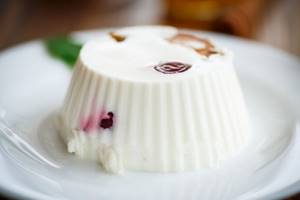
Fruit and berry smoothie
To prepare this dessert you will need: grapefruit, banana, several apricots, a handful of strawberries and 0.5 cups of grape or citrus juice. Berries and fruits are crushed in a blender, then juice is added to them. The finished drink is served in glasses, garnished with currants on top.
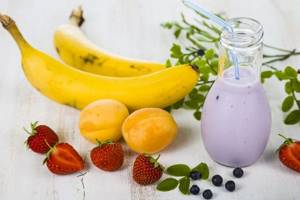
Energy value of fruits and berries
The top most energetically valuable overseas fruits are: avocado, dates, dried apricots, prunes. Avocado, by the way, is also beneficial because it contains many fatty acids. Dried apricots and prunes can easily replace candy for those with a sweet tooth.
Among the products more familiar to us, grapes, blueberries, and cherries hold the lead, although their calorie content is several times lower than that of exotic fruits. The most high-calorie fruit and, accordingly, a popular healthy snack is a banana. And for good reason, it has a fairly high glycemic index and an average of 90 kcal per 100 g of product. Despite their high energy value, bananas are a necessary product even during a diet. Nutritional value multiplied by a full range of beneficial microelements. Although you shouldn’t get carried away with them.
Tasty, healthy, low calorie
Let's talk about what fruits you can suppress hunger in a way that will benefit your figure.
- The undisputed champion on this list is grapefruit. Just two small fruits a day and unnecessary kilos will disappear many times faster. This fruit contains only 35 kcal per 100 g. In addition, grapefruit has diuretic properties and will rid the body of toxins and stagnant water in cells.
- An honorable second place belongs to melon - 39 kcal per 100 g. It will be especially useful for women, because folic acid, which is very high in melon, has a beneficial effect on the color and elasticity of the skin and adds shine to dull hair. Melon is also rich in fiber, so this fruit is ideal for gastrointestinal problems.
- And finally, bronze. The apple and pineapple take her away. An apple - 46 kcal, and is also your assistant in the fight for a slim figure. An excellent choice for a snack during fasting days and a worthy replacement for custard eclair. Pineapple - 48 kcal, excellently breaks down fats and dulls hunger.
For those who like to eat sweets - sea buckthorn, cloudberries, cranberries, viburnum. Their nutritional value ranges between 20 and 30 kcal.
| Product | Kilocalories (kcal) |
| Watermelon | 26 |
| Lemon | 32 |
| Cranberry | 29 |
| Grapefruit | 35 |
| Melon | 39 |
| Strawberry | 39 |
| Oranges | 40 |
| Tangerines | 40 |
| Strawberries | 41 |
| Raspberries | 42 |
| Cowberry | 42 |
| Black currant | 43 |
| Pear | 44 |
| Red currants | 45 |
| Apples | 46 |
| Peaches | 47 |
| Plum | 47 |
| Gooseberry | 48 |
| Blackberry | 49 |
| Apricots | 50 |
| Cherries | 53 |
| Cherry | 53 |
| A pineapple | 58 |
| Blueberry | 61 |
| Mango | 63 |
| Kiwi | 67 |
| Grape | 70 |
| Bananas | 93 |
| Avocado | 205 |
| Prunes | 227 |
| Dried apricots | 301 |
| Dried apples | 274 |
| Raisin | 289 |
| Lime | 53 |
| Canned cherries, 750 ml | 603 |
| Canned pears, 800 ml | 647 |
| Canned apricots, 800 ml | 784 |
| Canned pineapples, 850 ml | 809 |
| Persimmon | 53 |
Fish and seafood
Fish is rich in proteins and fats, however, as opposed to fats from meat, fish oils are beneficial for blood vessels and the heart due to their significant content of omega-3 fatty acids.
Seafood contains almost no fat - it is a high-quality protein product. Calorie content of fish and seafood in the table:
| Fish and seafood | Calorie content per 100 g of raw product | Calorie content per 100 g of prepared product |
| Red caviar | 250 | |
| Black caviar | 235 | |
| Shrimps | 95 | Boiled: 95 |
| Squid | 75 | Boiled: 75 |
| Cancers | 75 | Boiled: 75 |
| Carp | 45 | Roasted: 145 |
| Chum salmon | 138 | Roasted: 225 |
| Salmon | 142 | Fried: 155 Smoked: 385 |
| Bream | 48 | Boiled: 126 Dried: 221 |
| Pollock | 70 | Roasted: 136 |
| Perch | 95 | Stewed: 120 |
| Herring | 57 | Salty: 217 |
| Sprats | 250 |
Why are vegetables good for weight loss?
The presence of vegetables on the table of a person losing weight is mandatory, although they themselves do not burn fat, but:
- supply the human body with vitamins, beneficial microelements, fiber;
- allow you to achieve a feeling of satiety;
- They have such a low calorie content that they can be consumed without fear of harming your figure.
Very often, by torturing themselves with all kinds of diets, people cause irreparable harm to their health, depriving the body of substances necessary for normal functioning. If you eat right, consuming a large amount of vegetables, which contain few calories and a huge amount of useful elements, the need for a diet will disappear by itself.
Porridge
The need to count calories applies to all nutrition groups. For example, it is generally accepted that cereals and pasta are complex carbohydrates and do not harm the body in the process of forming a healthy body, but nutritionists warn that eating cereals in large quantities can cause an effect that is completely opposite to losing weight and building a high-quality body. The correct dose of a particular food product can be calculated by calculating the calorie content of your diet.
| Buckwheat | 4,5 | 1,6 | 27,4 | 137 |
| Cornflakes | 6,5 | 2,9 | 83,8 | 372 |
| Semolina | 2,5 | 0,3 | 16,4 | 77 |
| Oatmeal | 3,2 | 1,8 | 15,4 | 93 |
| Cereals | 11,9 | 7,5 | 69,1 | 358 |
| Barley porridge | 3,2 | 0,5 | 22,7 | 102 |
| Millet porridge | 3 | 0,8 | 17,2 | 92 |
| Rice porrige | 1,5 | 0,2 | 17,3 | 79 |
| Barley porridge | 1,4 | 0,3 | 18,7 | 84 |
| Barley flakes | 9,1 | 3,2 | 79,7 | 345 |
How many calories are in vegetables?
A wonderful summer time is coming, which will give us a great opportunity to enrich our diet with healthy vegetables. You can buy them in a store, enjoying the affordable price and excellent quality, or you can grow them in your own garden, enjoying the results of your own labor. The most important thing is that there is such a variety of all kinds of vegetable crops that you can prepare a new dish every day without ever repeating it.
Of course, the calorie content of vegetables will differ.
. The number of calories in vegetables containing starch (potatoes and legumes) will be higher than in “watery” vegetables (tomatoes, cucumbers, etc.). Therefore, their consumption should be limited, for example, you can replace high-calorie dishes with such products (pasta, pastries, fatty meats).
There are so many vegetable crops that it is not possible to consider the calorie content of each of them; for this, there are special tables that will help those for whom scrupulous calorie counting is necessary. We will consider the calorie content of vegetables, the most accessible and often used in the menu of a modern person.
- Potatoes are considered the most high-calorie plant; the calorie content of the vegetable is about 70 kcal, due to the starch it contains. Therefore, if you are aiming to lose weight, it is better to reduce your potato consumption;
- Carrots are a crop rich in fiber, vitamins A and B, iron, it is very nutritious and healthy, and most importantly, the calorie content of the vegetable is only 32 kcal
; - Broccoli is a real storehouse of useful vitamins and microelements; it helps speed up metabolic processes and normalize digestive activity. How many calories are in a vegetable? Only 28 kcal per 100 g!
- Spinach, containing calcium, iron and copper, as well as a large amount of vitamins, can satisfy your hunger without the slightest harm to your figure, because the calorie content of the vegetable is only 22 kcal.
- The appetizing aroma of pumpkin and its fresh taste make this product very popular among those who want to lose weight; the calorie content of the vegetable is 21 kcal per 100 g;
- Few people will eat onions as an independent dish, but adding them as a seasoning can add a piquant taste to even the most bland food. The calorie content of the vegetable is 38 kcal per 100 g.
- Juicy and tasty tomatoes can delight you in almost unlimited quantities, because the number of calories in a vegetable is only 14-19 kcal per 100 g;
- Cucumbers, which have a diuretic effect, can rid the body of excess moisture and saturate it with vitamins and beneficial microelements, while the calorie content of the vegetable is only 10-15 kcal;
- White cabbage is an integral product of a healthy diet, which helps normalize intestinal activity and the digestive system as a whole. The vegetable contains 28 kcal per 100 g.
Negative calorie content of vegetables is a concept that is of great importance for those who want to lose weight.
. This means that there is a group of vegetables for the processing of which the body spends more calories than the crop itself contains. You don’t even have to count how many calories are in vegetables, since almost all of them have negative calories.
Permitted and prohibited products
The diet is based on protein and carbohydrate products:
- cereals;
- pasta, biscuits, dry biscuits;
- bread (preferably rye or white from coarse grains);
- lean meat, dairy sausages, fish;
- dairy products (kefir, curdled milk, yogurt, low-fat sour cream, cottage cheese, hard cheese);
- insipid yeast-free baked goods;
- vegetables;
- berries and fruits, as well as marshmallows, mousse, jelly, jelly, compote made from them;
- eggs (no more than 1 piece per day);
- weak tea, chicory drink;
- honey (2–3 teaspoons per day).

The consumption of foods that are difficult to digest, cause increased secretion of gastric juice or bloating, increase cholesterol levels, and contain simple carbohydrates is limited or completely eliminated. These include:
- fast food, semi-finished products, canned food;
- fat meat;
- animal fats, margarine, butter substitutes;
- hot sauces, mayonnaise, mustard, garlic;
- baking from yeast dough;
- coffee, cocoa;
- chocolate, pastries, cakes, butter cookies;
- legumes, mushrooms, radishes, sorrel that provoke fermentation;
- alcohol;
- carbonated drinks and sour kvass.
Despite the fact that green tea is considered useful for weight loss, it can cause pain in some diseases of the gastrointestinal tract or pancreas. During the period of exacerbation of pancreatitis, anacid gastritis, peptic ulcer disease, it is better to drink teas from mint, lemon balm, currant or raspberry leaves.
Calorie content of vegetable salads for weight loss
Of course, most vegetables are tasty on their own, but you always want to diversify the menu with unusual dishes that are healthy for your figure. The easiest way to prepare vegetables is to make a salad that combines the beneficial properties of its ingredients.
The calorie content of a vegetable salad for weight loss is calculated by summing the number of calories of each product included. As an example, let me offer you a recipe for a delicious and healthy salad.
Vegetable salad “Breath of Summer”
- Tomato – 100 g (16 kcal);
- Cucumber – 100 g (15 kcal);
- Parsley – 10 g (4.7 kcal);
- Bell pepper – 50 g (13.5 kcal);
- Olive oil – 5 g (44.9 kcal);
- Salt – 2 g (0 kcal).
The total weight of the salad is 267 g, the total number of calories is 94.1 kcal, that is, the calorie content of such a salad per 100 g will be 35.3 kcal. Thus, the low calorie content of vegetable salad allows you to use such a dish for the benefit of the body and without harm to the figure.
Reviews and results of losing weight
Marina, 26 years old
I was forced to start steaming because of allergies in the child I was breastfeeding. At first I didn’t even have a double boiler; I simply placed a suitable sized metal sieve on a pan of water, which I covered with a lid. And when a multicooker appeared in the house, in which you can cook steamed meat, cutlets, vegetables, fish, dumplings, cheesecakes, my husband began to eat such dishes with pleasure. The fact that I got rid of several extra pounds in a fairly short period of time is perhaps less indicative - after all, the postpartum period involves heavy loads. But my husband, who always had problems with weight, lost 5 kilograms in a couple of months! So the steamed diet gives results, and not bad ones.
Natalya Ivanovna, 36 years old
I read rave reviews from those who have lost weight on the steam diet, and I wonder what’s special about it? Yes, it is considered medicinal, I don’t argue with that. But it seems to me that the effect for losing weight is not the method of preparation, but the low calorie content - the food is prepared without fat. Considering that you can cook with virtually no fat in modern frying pans, then why limit yourself to delicious dishes? For example, I love fried foods, and if I needed to lose excess weight, I would simply start eating foods that are low in calories.
Ivan Alexandrovich, 42 years old
The steam diet was prescribed to me by my local therapist. The reason is 2nd degree obesity, and blood sugar appeared. I got used to doing without fatty and fried foods very quickly; it was difficult to give up salt. I didn’t feel hungry at all; I came up with the menu for each day myself, in accordance with the requirements of the diet. I only had vegetables for dinner and drank a glass of kefir before going to bed. My results: I lost weight, in 4 weeks my body weight became 4 kg less, my sugar levels were almost normal. I plan to stick to this diet all the time.
Cocktails and smoothies
Cocktails, sweetened specialty coffee drinks, teas and soda are the biggest enemies of healthy eating, especially when it's hot outside. But they can be replaced with more useful solutions.
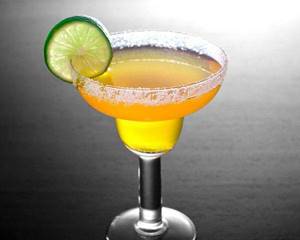
There is a certain risk here, we must give the body a lot of fluid, especially in the hot season, but fluids quench thirst and do not affect the feeling of hunger. Many people are sure that there are no calories in drinks. This is a gross violation. After all, manufacturers often add huge doses of sugar to make the drink more attractive, so it is best to prepare the drink at home. You can make ginger iced tea or lemon water. These drinks do not spoil so quickly and will perfectly quench your thirst even in the midst of summer.
Many people complain that vegetable calorie tables constantly remind them of the weight loss process. But don’t despair, because a beautiful figure is worth it.
General principles of a vegetable diet
It turns out that the caloric content of green fruits is the most minimal. This applies to both vegetables and fruits. Moreover, the former are more useful for losing weight, as they contain a minimum of carbohydrates. As for fruits, the sugars they contain can lead to fat deposits on your body. The least amount of calories contains ordinary greens - dill, parsley, onion, cilantro, basil. The same applies to herbs - mint and lemon balm, which not only help make dishes aromatic and tasty without harming your figure, but also dull the feeling of hunger, improve immunity, and have a positive effect on the functioning of the nervous system.
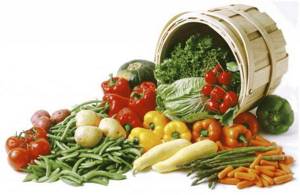
energy value,
Meat, poultry
Meat and offal have a lot of pleasant preparation variations that can easily replace sausages from the store. At the same time, the saturation of the body when consuming homemade cutlets, blood and other homemade sausages, simply stewed or even grilled meat is simply colossal in comparison with the saturation that comes with eating a sausage sandwich from the store. Nevertheless, uncontrolled consumption of meat dishes cannot have a positive effect on the figure and health of the body as a whole. Since 100 grams of meat products contain an average of 200 kcal. To correctly build your daily diet, you should constantly refer to the calorie table.
| Mutton | 16,2 | 15,3 | 201 | |
| Lamb Kidneys | 13,4 | 2,6 | 78 | |
| Lamb Liver | 18,9 | 2,8 | 102 | |
| Lamb Heart | 13,6 | 2,7 | 85 | |
| Beef | 18,7 | 12,6 | 191 | |
| Beef Brains | 9,3 | 9,6 | 126 | |
| Beef liver | 17,6 | 3,2 | 100 | |
| Beef Kidneys | 12,4 | 1,9 | 67 | |
| Beef Udder | 12,1 | 13,8 | 176 | |
| Beef Heart | 15,2 | 3,1 | 89 | |
| Beef Tongue | 13,4 | 12,1 | 160 | |
| horsemeat | 20,3 | 7,1 | 149 | |
| Rabbit | 20,6 | 12,8 | 197 | |
| Pork lean | 16,3 | 27,9 | 318 | |
| Pork is fatty | 11,6 | 49,1 | 484 | |
| Pork kidneys | 13,2 | 3,2 | 84 | |
| Pork liver | 18,6 | 3,5 | 105 | |
| Pig heart | 15,2 | 3,1 | 87 | |
| Pig tongue | 14,4 | 16,5 | 203 | |
| Veal | 19,9 | 1,1 | 91 | |
| Geese | 16,4 | 33,1 | 359 | |
| Turkey | 21,1 | 12,3 | 0,6 | 192 |
| Chickens | 20,4 | 8,6 | 0,8 | 161 |
| Chickens | 18,5 | 7,9 | 0,5 | 159 |
| Ducks | 16,4 | 61,3 | 348 |
